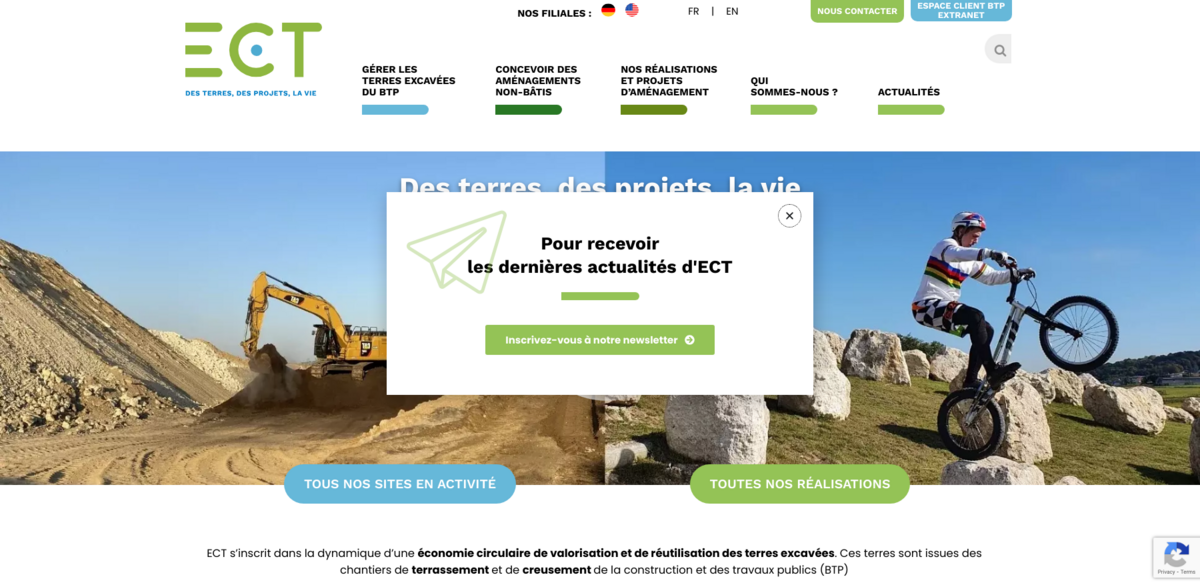What is the ECT Project All About?
ECT re-uses construction soil for land-use developments like parks, golf courses, and the re-establishment of agricultural land. The story began back in the 1970s with an extension project for a park in the North of the Paris region, known as The George Valbon in La Courneuve. The idea, developed by three landscapers—Allain Provost, John Whalley, and Gilbert Samel—was to create a totally artificial world made up of small valleys, hills, lakes, and panoramic viewpoints. Meanwhile, big construction works were underway in Paris, including a massive excavation beneath the former covered market, le Forum des Halles.
Claude Picard played a key role by matching the need for soil in the park extension with the excavated soil coming from Paris construction sites. Since construction companies were paying to evacuate their excavated soil, this also became a source of financing for the George Valbon park. And just like that, ECT’s business model was born! The circular economy strategy has been driving ECT’s growth ever since, promoting sustainable development projects in partnership with local authorities, mainly around Paris.
Main Benefits and Key Figures of ECT’s Work
ECT’s approach isn’t just about reusing soil—it’s about making a real environmental and societal impact. Here are some key figures and facts that highlight the scale and success of their work:
- 1 million tons of excavated materials treated per year
- 100 employees across France, supported by 4 regional agencies
- 1 site regularly in operation to valorize excavated soils
- 10,000 trees planted on average each year
- 40,000 solar panels installed, thanks to a partnership with Akuo
How Does ECT Manage Excavated Soils?
Before any soil or inert material arrives at an ECT site, it undergoes a strict preliminary control process called the DAP (Demande d’Acceptation Préalable, or Preliminary Acceptance Request). Each client company must submit this request to ECT’s Quality service, providing details like the geographical origin of the soil, the producer’s and transporter’s contact info, and the type and quantity of fill. This info is then cross-checked with a database of potentially contaminated sites in the Île-de-France region (BASOL). If pollution is suspected, prior analyses are mandatory. No material is accepted without prior approval, ensuring compliance with safety and environmental standards.
Handling Polluted Soils with Specialized Treatment
ECT isn’t just about inert soils—they also manage polluted soils, especially those contaminated with hydrocarbons. They operate a unique biological treatment center in La Courneuve (93), which is the first fully covered and enclosed center of its kind in France. This facility allows ECT to treat polluted soils safely and effectively, making sure that even contaminated materials can be managed responsibly and sustainably.
Designing Sustainable and Biodiverse Developments
ECT’s projects are designed with biodiversity and life in mind. These developments take many forms depending on local challenges: landscaped parks, reforestation efforts, noise barriers, agricultural elevations, urban farms, photovoltaic plants, golf courses, sports fields, and leisure facilities. All projects are coordinated with local authorities and are fully financed by the reuse of excavated soils—meaning no public money is spent. This approach ensures that developments are both environmentally sound and socially beneficial.
Project Impact on Sustainable Development Goals (SDGs)
- SDG 11: Sustainable Cities and Communities
- SDG 12: Responsible Consumption and Production
- SDG 13: Climate Action
- SDG 15: Life on Land
- SDG 7: Affordable and Clean Energy (through solar panel partnerships)
ECT’s Circular Economy Strategy and Growth
At its core, ECT’s business model is a shining example of circular economy principles in action. By reusing excavated soil from construction sites, the company supports concerted and sustainable development projects that contribute to renewable energy, urban agriculture, and wildlife preservation. This strategy not only reduces waste but also creates valuable green spaces and infrastructure, all while fostering partnerships with local communities. It’s a win-win that’s been growing steadily since the 1970s—and it’s still going strong today.





















